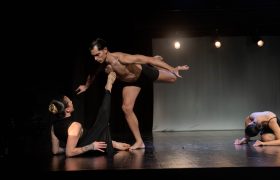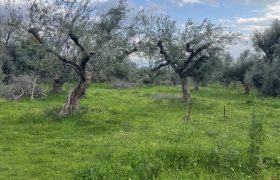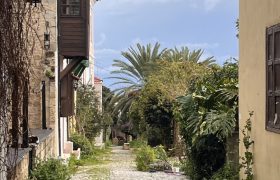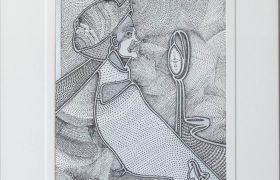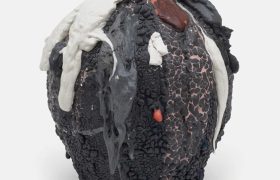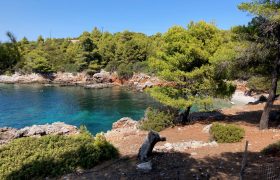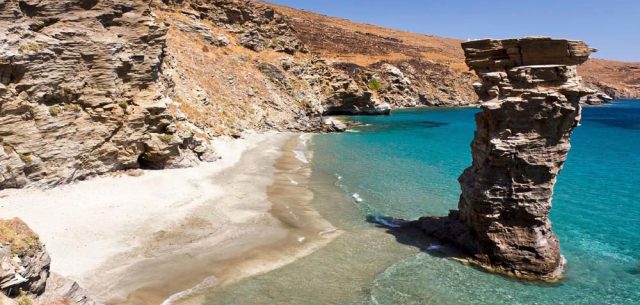A Magical Tour of Greece Part 2: Islands
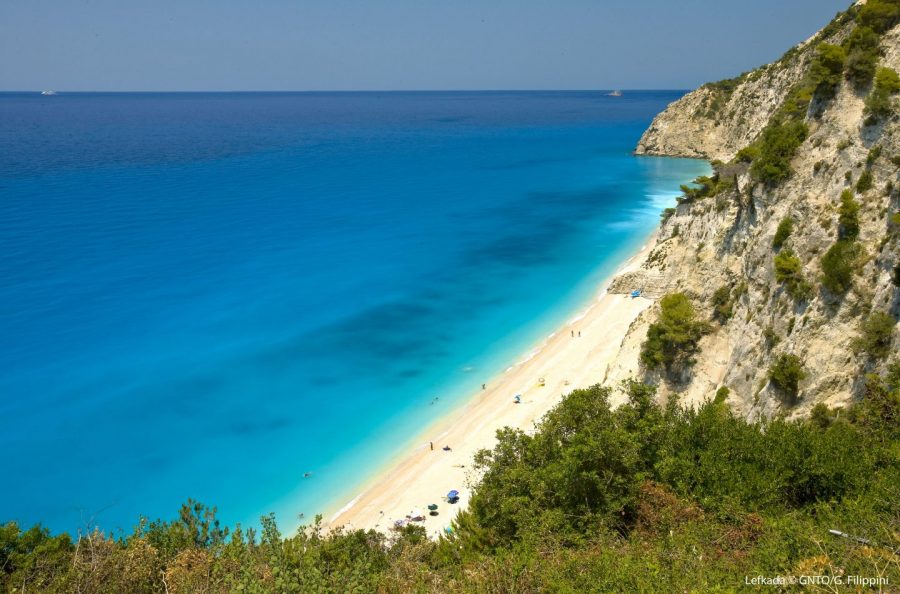
In his sequel fantasy series, John Kittmer, not unlike Jason or Odysseus, takes us through archipelagos and roll-calls of island names. These names have a magic all of their own. The poet Odysseas Elytis knew this well; ‘Each word a swallow to bring you spring in the midst of summer’.
In this magical six-day tour, I am finally – after 36 years of travelling – visiting all of the significant places I’ve yet to see and experience in a lifetime’s pilgrimage across Greece. In part 1 I ‘completed’ the mainland, in a wonderfully rich tour of monasteries, citadels, ancient theatres, forts and market-towns – all set in ravishing landscapes, girt by the sea and the mountains; indented with secretive inland lakes. All of this was done in the blinking of an eye, leaving me time still to explore islands and mountains. This time I’m boarding my magical boat, to hop across unknown islands, somehow impossibly keeping within my six-day timeframe. I’m taking with me my trusty Blue Guide and Durrell’s Greek Islands.
I’m starting my journey at Volos on the Pagasitic Gulf. My ultimate destination is Limni on Evia (Euboea). But like Jason or Odysseus, my journey will not be a simple one; we will not be going in a straight line. In my years of wanderings in Greece, I’ve visited every archipelago – 32 islands in all; I know the joys of island-hopping. The Sporades, the NE Aegean, the Dodecanese, the Cyclades, the Argo-Saronic, the Ionians: all beautiful names, conjuring subtly different memories. But on this magnificent journey I aim for new adventures. None of the places I visit, except my points of departure and arrival, are known by me. As Tennyson’s Ulysses puts it:
‘All experience is an arch wherethro’
Gleams that untravell’d world whose margin fades
Forever and forever when I move’.
The ship I’m boarding is called Argo and she is a magic craft: magic because she not only travels at very high speeds (as her Greek name suggests), but because she is a shape-shifter, embodying, as we go, four thousand years of Hellenic seafaring. The route we will trace across the oceans mirrors the outline of a butterfly’s wings: as it happens, that is the shape of my favourite island – which we shall not visit on this trip. (I have to keep some semi-secrets.)
On this sea journey, I shall move from one archipelago to the next. One of the great joys of the Aegean and the Ionian is the clustering of isles and islets, and the roll-calls of island names. The poet Odysseas Elytis knew this well; these names have a magic all of their own. In the Gloria of his great poem ‘The Axion Esti’ the names of islands occur in a moment of lyrical rhapsody: ‘Each word a swallow to bring you spring in the midst of summer’. Mikis Theodorakis set these names beautifully to music for a single psaltis (singer). The names evoke music, poetry and all the senses: the sights, sounds, tastes, touch and smells of the Greek islands. So as you read my lists of islands, think also of Elytis’ great poem and Mikis’ masterful setting of it, and dream.
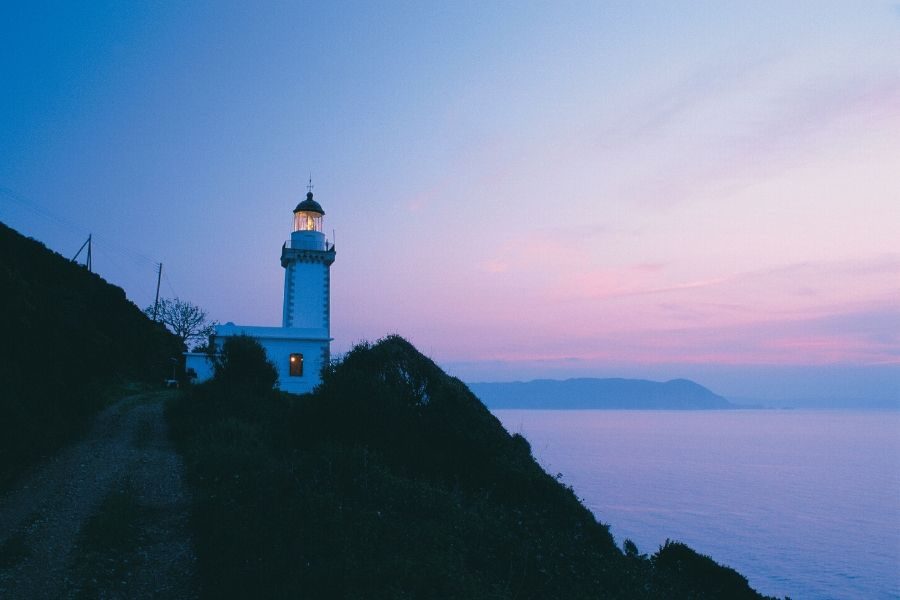
Skopelos ©GNTO/Y.Skoulas
Skopelos – Skiathos – Alonissos
As I leave Volos, Argo is a pentekonter: she has fifty oarsmen, twenty-five on each side, and a single mast in the mid-ships. She was built of pines from Mt Pelion. The Roman poet Catullus may be wrong to call her the first shipbut it was certainly Athena who made her ‘with her own hands…to scud…at every breath of wind.’ On Volos’ foreshore the sea-nymphs and a few tourists watch us as we leave. We are headed directly for the Sporades. Apollonius tells us that Jason passed by Skiathos, hugging the coast as he headed north to fetch the Golden Fleece. But I shall land there.
The Sporades are the last cluster of islands that I got to know. I spent three wonderful days on Skyros in 2015, commemorating the centenary of the death of the poet Rupert Brooke. He’s buried there in a beautiful, remote olive-grove, a ‘corner of a foreign field that is forever England’, and had the good sense to die on the patronal feast-day of both Skyros and England.[1] The Mayor and islanders gave us wonderful hospitality. One morning, I rose with the dawn to jog along the east coast of the island, the sun shimmering marvellously in peachy shades of pink.
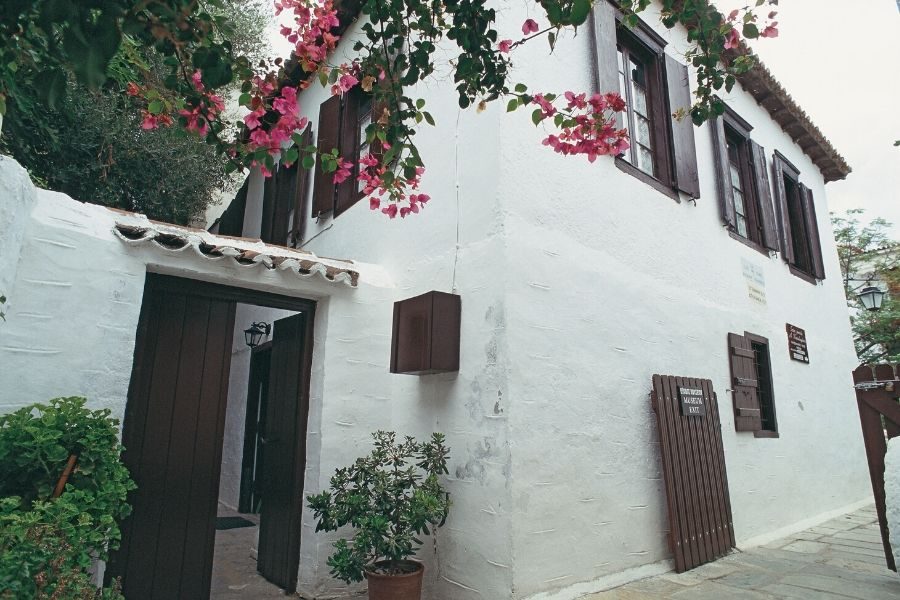
Papadiamantis House, Skiathos, ©GNTO/Y.Skoulas
This time, however, I shall visit three islands that are closer to the mainland and are strung out like the lower beads of a necklace. On Skiathos, I want to trace the novelist Alexandros Papadiamantis (1851-1911) and to idle some time away on Koukounaries beach, described by Durrell, who knew a thing or two about idle loafing, as ‘by common consent the finest in Greece’ (even the normally austere Blue Guide agrees). Next in the chain is Skopelos which was discovered by the producers of Mamma Mia! and has, I guess, never been the same since. There are probably worse ways to spend a few hours than camping it along to an Abba soundtrack in search of beaches trodden by Meryl Streep. A boat trip to the chapel of Agios Ioannis beckons. Alonnisos, the most easterly of the larger islands, is the centre of the Sporades Marine Park, where hugely important work is underway to conserve the endangered Monk Seal and other marine species (see Hellenic Society for the Study and Protection of the Monk Seal). A visit to the scientific centre at Gerakas Bay is a must.
Samothrace – Ikaria
As I leave the Sporades, Argo has performed the first of her metamorphoses. She is now an Athenian trireme, of the sort that the Assembly would despatch to deliver unreasonable instructions to subject islands at the height of Athens’ fifth-century empire. I used to cox rowing eights and fours at university, but on this occasion I have been asked to join the Athenian citizens as an oarsman. There are three banks of rowers: the thranitai, zygitai, and thalamitai. I am in the lowest rank, a thalamites, closest to the water. Cramped conditions, but good exercise. We are bound forSamothrace in the NE Aegean.
This was always one of the most mysterious islands. It’s a granite mountain: Poseidon watched the Battle of Troy from the peak of Fengari (1600 m). It has no natural harbour: disembarking remains a hazardous venture. And it was the home of a cult of the Great Mother and the Kabeiroi, Anatolian divinities also worshipped on Lemnos. (I visited the sanctuary there some years ago when it was deserted: it’s a dramatic and numinous site.) This was a mystery cult with rites of initiation. Initiands were asked to name the worst deed they had committed in their life and as initiates were rewarded by the promise of salvation from drowning. The remains of the sanctuary are substantial. Durrell memorably hated the thought of it and refused to step ashore (‘I felt the cannibals warming up the cooking pots’). I am made of sterner stuff – and, in any case, salvation from drowning might be helpful on this seagoing trip.
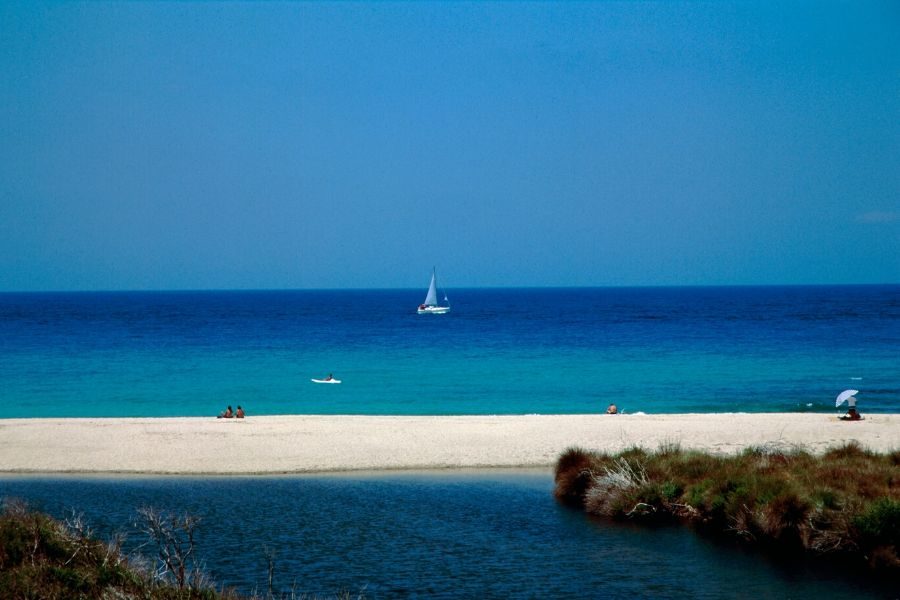
Ikaria ©GNTO/Rozaki
As I board Argo for Ikaria, she has shifted shape again. We are going to pass by the wealthy islands of Mytilini, Chios and Samos, on the sea routes from Constantinople to the Levant. Byzantine merchants used to ply their trade here, from port to port, and the Byzantine navy patrolled for centuries in ships called ‘dromons’, from which formidable Greek Fire could be thrown at hostile forces. Argo now has two masts, with 54 oars on each side, ranged in two banks: a ‘bireme’. We move fast.
Ikaria lies in a SW-NE orientation, and from the air is dramatic (I’ve flown over it several times on trips to Samos), with a bluff spine of rock that thickens and appears to rise towards the SW. I know only two things about it: it is famous still for its hot springs and its people live very long lives. There are, it is said, more healthy people here over the age of ninety than on anywhere else on the planet. This is attributed to diet and to a relaxed pace of life. Sounds great.
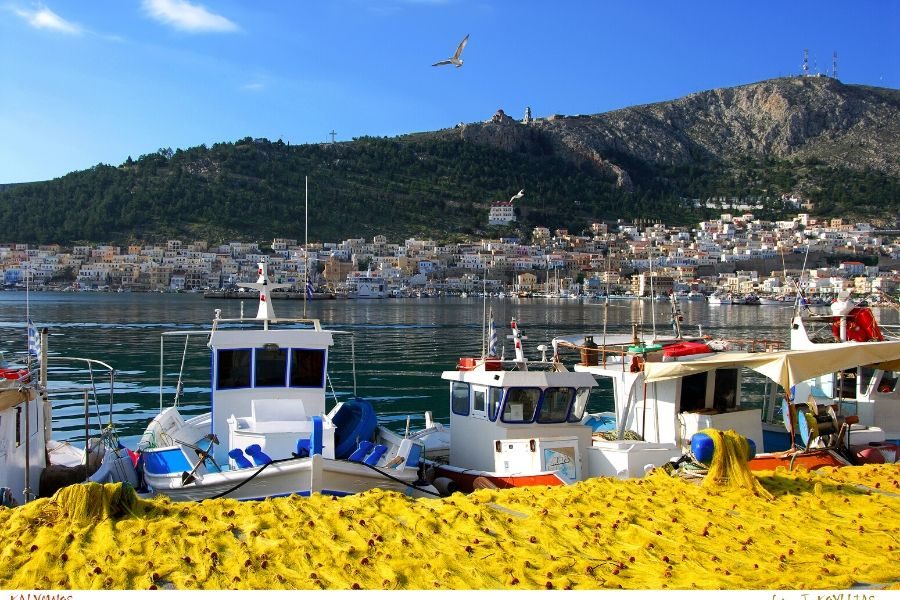
Kalymnos ©J.Koylias
Kalymnos – Nisyros – Kastelorizo – Karpathos
I now want to head south to the Dodecanese: the last islands to be formally appended to the Greek state, in 1948. My most magical trip here happened several years ago. Our journey from the Piraeus was delayed and our early evening arrival was delayed long into the night. But we travelled by the light of a full moon, under a sable sky, ablaze with starlight. The ferry followed a silvery carpet of moonlight spread across the sea to Patmos. We arrived about three o’clock in the morning dazed by sleeplessness and the magic of it all.
On this trip, in the fierce Byzantine warship, I plan to stop off at small islands. First, Kalymnos, where I hope to meet some sponge-divers and learn about this ancient industry. Then to Nisyros, one of the Aegean’s spectacular volcanic islands. Like other such places in the Aegean, it has, they say, a strong smell of sulphur about it. The caldera is enormous: two miles in diameter. The main town of Mandraki looks lovely, with its kastro and Monastery of the Virgin Spiliani. Bypassing adorable Rhodes, we then head for Kastellorizo: the most remote of all the Greek islands. The Knights of St John were here too and there is even a Lycian rock-tomb. And though much damaged in the Second World War the main port-town looks enchanting. Finally, I want to see Karpathos. Durrell describes it as ‘mostly orchard and vineyard, rich in trees with plenty of water and shade’, and he loved its inland villages. The mediaeval settlement of Olympos, where the older women still wear traditional dress, sounds wonderful.
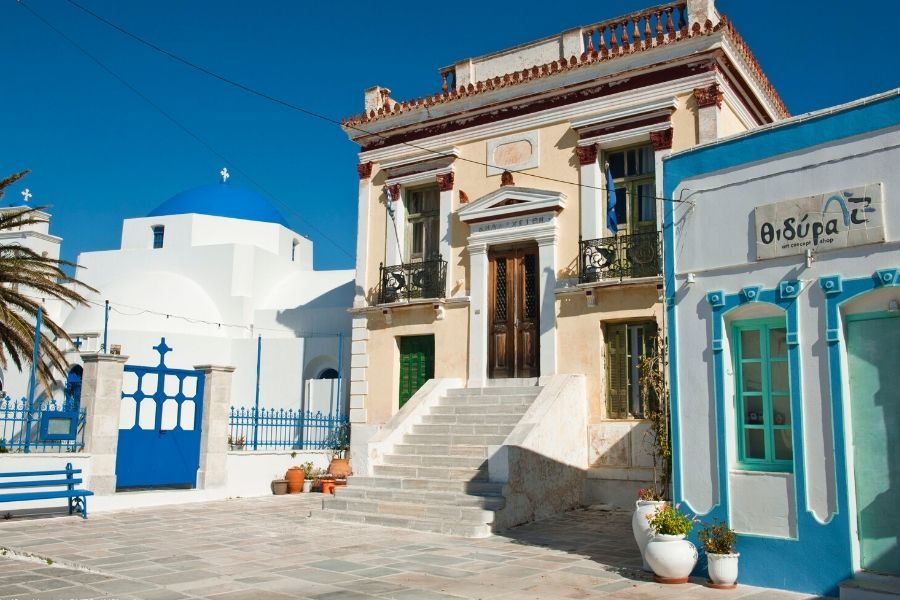
Serifos ©Skoulas
Folegandros – Milos – Serifos – Kythnos
As we leave Karpathos, Argo has changed again. We are heading to the Cyclades, islands long dominated by the Most Serene Republic of Venice. And although, on this trip, I shall miss Syros and Naxos, the two remaining centres of Catholic population, Argo has become a large Venetian merchant galley, a galea grossa da merchado, with rowers, masts and sails, and packed with goods.
As surely everyone does, I love the Cyclades. Island-hopping here, even with the massive rise in tourism, retains its enchanted quality. As you sail here, islands – inhabited and barren – pass by in prodigious number, rising and disappearing on the horizon. The sun sparks off the surface of the deep blue, and, as you come to land, the colours of the water change to magnificent shades of aquamarine, turquoise, teal even, with the seafloor rising rapidly to meet you through pellucid, crystalline waters. I want to visit four small islands – all unknown to me, and as I move from one to the next, I expect that the pace of life will slow, my cares will at least temporarily evaporate, and I will revel in things that have become pure essence: light, shade, an icy ouzo, some olives, a salt cheese…
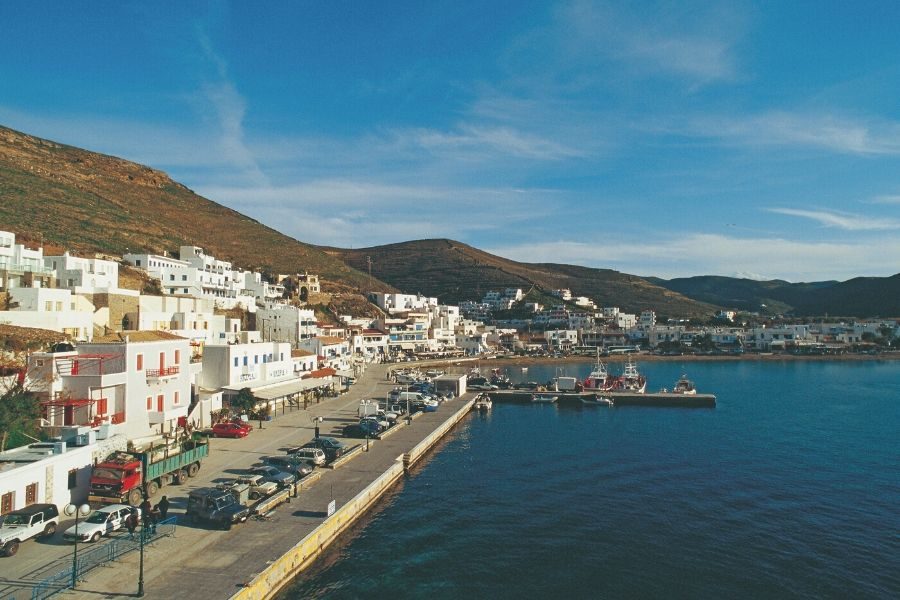
Kythnos ©GNTO/Y.Skoulas
Folegandros first, to see the dramatic location of the main town, the Chora. Then to volcanic Milos, where I shall remember some ancient history and reread Ritsos’ great poem The Annihilation of Milos, before settling to enjoy the astonishing beauty of the landscape and seascape. Then to two other westerly islands, Serifos and Kythnos. At least from afar (I’ve passed it several times), Serifos looks like the quintessence of a Cycladic island: rocky, barren, with its main village, Chora, a mass of brilliant white cubes, lifted up high and touching the sky. Kythnos is less dramatic, but like Ikaria, has thermal springs. The promise of a hydrotherapy centre and very few foreign tourists appeals.
Angistri – Lefkada – Paxoi
I’m now heading to the NW, to leave the Aegean. As we enter the Argo-Saronic Gulf, Argo changes again. She is now the spitting image of Admiral Miaoulis’ flagship ‘Hellas’, one of the combatants in the Greek War of Independence. The seafarers from these islands (Hydra and Spetses) and their comrades from the NE Aegean (Psara) played an important role in the harassment and containment of the Ottoman Fleet. Argo is proud now to be configured as a Greek frigate.
Angistri is a small, pine-clad island lying close to Aegina. It’s the only inhabited Argo-Saronic island I don’t know. I want to stop there briefly (lunch!) before we head NW to pass through the Corinth canal. This will be the first time I’ve gone through the canal itself. We are heading now for the Ionian Islands: the only part of today’s Greece that was ever ruled by the English.
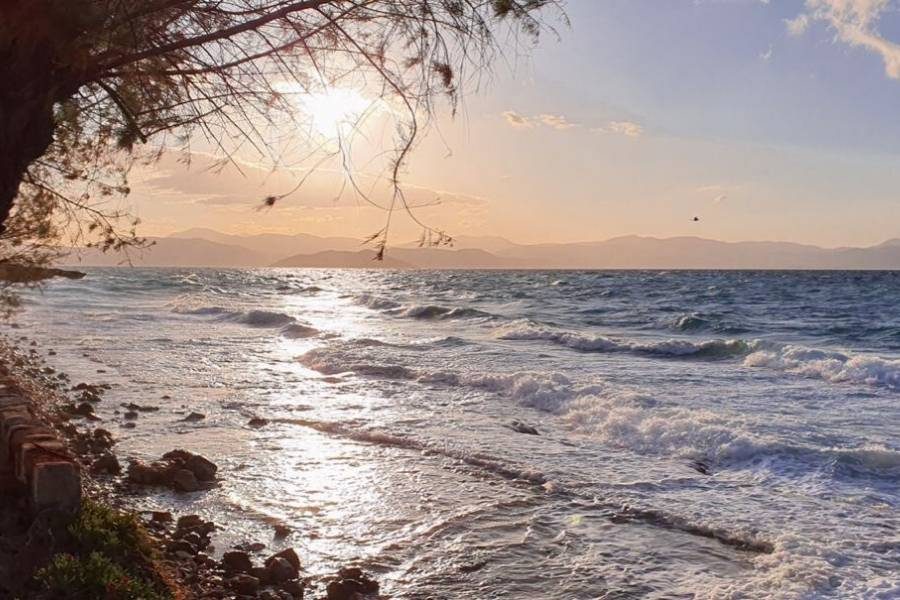
Sunset over the Peloponnese seen from Angistri. ©John Psaropoulos.
As we emerge into the Gulf of Corinth, Argo – to my surprise – changes again. Oddly, she starts emitting smoke. But she hasn’t caught fire. As we pass Itea, where on 29 September 1827, Captain Frank Abney Hastings destroyed an Ottoman squadron (the ‘Battle of Itea’), Argo has taken on the form of the ship he most famously commanded, the steam-corvette Karteria. Hastings was one of the first to realise the strategic importance of coal-fired steam-ships in the struggle against the Ottomans. I had the honour, in 2016, of handling the lengthy memorandum he wrote in the autumn of 1823 to Byron. One of the treasures of the Greek National Library, it begins: ‘I lay down as an axiom that Greece cannot obtain any decisive advantage over the Turks without a decided maritime superiority’. Quite right. He died of wounds sustained in action in 1828 and is buried on Poros; his heart is interred in the Anglican church of St Paul’s Athens. A true hero.

Remembering him, I continue my voyage to the Ionian islands: at least those three that I don’t know. These islands are so very different from the Aegean islands. Lush, green, almost tropical; surrounded by cold waters. First Lefkada. Not quite an island, it’s joined by a spit to the mainland. Here I want to see the inland villages and, at the island’s most southerly point, the 200ft white cliffs of Cape Doukato, where the poet Sappho is alleged to have killed herself – far from her homeland in Mytilini. (The legend has it that she was distraught at a failed love affair but she was in her seventies, ‘by which time’ as the incredulous poet Michael Schmidt waspishly puts it, ‘she might have been expected to have learned restraint’.) I head then to the island of Paxoi, which lies to the south of Corfu. I’m told it’s very beautiful.
Kythera – Evia
As I board Argo at the little port of Gaios on Paxoi, she has prepared for our voyage down the west coast of the Peloponnese to the most southerly of the Ionian Islands, Kythera. As we get going, she is once again under full sail, because she has taken the shape of a nineteenth-century British ship-of-the-line, a great war-ship built like Admiral Codrington’s flagship, HMS Asia. She is flying the white ensign.
Down the coast we go. As we pass the Gulf of Kyparissia, we slow almost to a stand. The shoreline here is the precious breeding ground of the endangered loggerhead sea turtle, caretta-caretta. I’ve seen these great creatures swimming in the sea at Zakynthos and I want to catch sight of them in this their most important habitat (see further here). I’m saying a prayer for their conservation. A little further south we approach the island of Sphacteria. We will not land. This island encloses Navarino Bay, where the decisive battle of the Greek War of Independence was fought, on 20 October 1827. The island, the bay, the town of Pylos are favourite places. Places for homage.
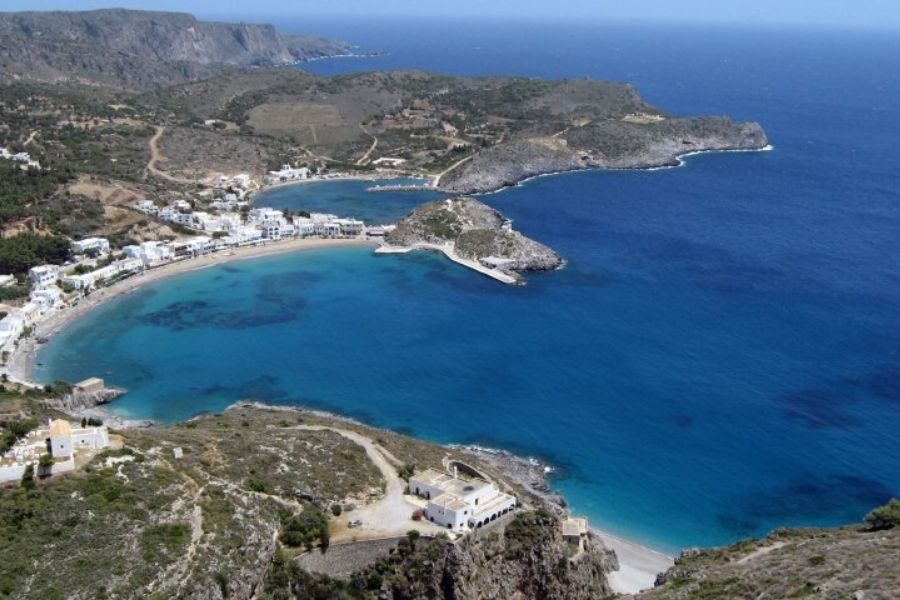
As we round Cape Matapan, at the foot of the Mani, we see Kythera in the distance. A rocky island. She has some remains, I believe, from the period of British rule (which ended in 1864). I want to explore this place at leisure. The Chora, by the sea, has a pretty kastro and inland, hidden from the view of pirates, is the mediaeval settlement, the Palaiochora.
We’re back now in the Aegean and are heading for Evia, our final destination. In this last round of metamorphoses, Argo has become sentimental. She is yearning for home and her return, her nostos. So she briefly resembles the battleship Averoff; then she looks like the battlecruiser Elli. But on these waters, she can’t forget either the Greek merchant marine: the dry bulk carriers, the ‘Aframax’ tankers, the ferries and catamarans, the ultramodern LNG carriers – the nerves and sinews of modern Greek seafaring. As we finally approach the pretty port of Limni on the beautiful island of Evia, we are once more under sail, in the form of a modern super-fast 60′ trimaran. We will reach land gracefully. And the water trickling under Argo’s bows seems to whisper some words of Kazantzakis:
‘Fortunate is the person who, before he dies, manages to sail the Aegean.’
We arrive at Limni as dusk falls. Fortunate indeed.
[1] The poet A.E.Stallings wrote beautifully about this event here.
Part 3 (the final part) of my magical tour takes me to unknown mountain peaks. Coming shortly.
John Kittmer is a poet, philhellene and an independent researcher, who is working on the poetry of Yannis Ritsos. This article first appeared in the author’s blog

